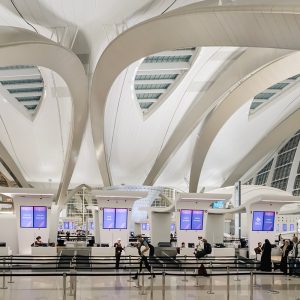Dubai International Airport most connected hub status has once again been confirmed, solidifying its position as a top global travel center in the Asia-Pacific and Middle East regions. The airport’s impressive connectivity and strategic importance continue to drive its rapid growth, serving millions of passengers yearly and connecting hundreds of cities worldwide.
This recognition highlights Dubai’s role not only as a travel hub but also as an economic powerhouse, supporting tourism, trade, and business growth throughout the region.
Why Dubai International Airport Is the Most Connected Hub
Dubai International Airport (DXB) stands apart from other airports because of its vast global network and the volume of destinations it serves. It connects more cities and countries than any other airport in Asia-Pacific and the Middle East.

This makes DXB a preferred choice for travelers, airlines, and businesses looking for easy, fast connections across continents. Dubai’s geographic location—situated between Europe, Asia, and Africa—gives it a natural advantage for air travel routing.
More than 260 destinations are accessible from Dubai, covering key economic centers in the Americas, Europe, Asia, Africa, and Oceania. The airport acts as a bridge, enabling passengers to reach places that would otherwise require multiple stopovers.

Key Factors Driving Dubai’s Connectivity Success
Several important factors have helped Dubai International Airport become the most connected hub:
- Strategic Location: Dubai’s central position makes it the fastest air route between many global cities. For example, flights from Europe to Asia or from North America to Africa can connect through Dubai with minimal travel time.
- Extensive Flight Network: DXB operates over 140 airlines and offers flights to 260+ destinations. This diversity allows passengers to have more direct flights and fewer transfers.
- Modern Facilities: The airport features advanced terminals, with Terminal 3 alone capable of handling over 43 million passengers per year. Facilities include fast check-ins, automated border controls, luxury lounges, and efficient baggage handling systems.
- Strong Airline Partnerships: Dubai is the home base of Emirates Airline, the largest carrier in the Middle East. Emirates operates over 270 aircraft flying to 150+ destinations, connecting Dubai to nearly every corner of the world. Other airlines like flydubai complement Emirates, adding to Dubai’s vast reach.
- High Passenger Traffic: In 2023, Dubai International Airport handled more than 90 million passengers, making it the busiest airport in the Middle East and one of the busiest worldwide. This high volume supports frequent flights and routes to many destinations.

The Impact on Travel, Tourism, and Economy
Dubai International Airport’s status as the most connected hub greatly benefits the city and the wider region. It boosts tourism, creates jobs, and increases spending across many sectors.
Tourists from Asia, Europe, and America find Dubai easy to reach due to the many direct flights. Many travelers use Dubai as a stopover to explore the city before continuing their journey. This stopover tourism supports hotels, restaurants, shops, and entertainment venues.
Additionally, the airport facilitates business travel and international trade. Dubai’s role as a global trade center relies heavily on efficient air connections, allowing goods and services to flow quickly. The airport supports the transport of high-value and time-sensitive cargo, including electronics, pharmaceuticals, and luxury goods.
This connectivity also encourages foreign investment and helps attract multinational companies to Dubai, contributing to economic diversification beyond oil.
Dubai International Airport’s Role in Aviation Recovery Post-Pandemic
The global COVID-19 pandemic severely disrupted international air travel, with many airports and airlines facing huge losses. Dubai International Airport, however, managed a strong recovery, thanks to its diverse routes, high passenger demand, and effective safety measures.
By quickly implementing health protocols such as testing, contactless check-in, and sanitation, DXB reassured travelers and airlines. The airport expanded flights as global travel reopened, restoring and surpassing many pre-pandemic routes.
Dubai’s resilience helped reestablish it as a vital link between East and West, supporting regional and global economic recovery.
Sustainability and Future Growth Plans for Dubai International Airport
Dubai International Airport is not only focused on growth but also on sustainable development. As aviation faces increasing pressure to reduce carbon emissions, DXB is investing in green technologies and environmentally friendly infrastructure.
Efforts include:
- Energy Efficiency: Using solar power and energy-saving designs in new terminals.
- Waste Reduction: Recycling programs and reduced single-use plastics.
- Carbon Offsetting: Partnering with airlines and organizations to support carbon offset projects.
- Electric Ground Vehicles: Transitioning to electric buses and baggage carts.

Looking ahead, DXB plans to expand its capacity to handle up to 130 million passengers annually through terminal upgrades and new facilities. This will allow Dubai to maintain its lead as the most connected hub while meeting future travel demand.
Conclusion: Dubai International Airport’s Leading Global Connectivity
Dubai International Airport most connected hub status is well-deserved. The airport’s strategic location, modern facilities, and strong airline partnerships make it the premier travel center in Asia-Pacific and the Middle East.
For passengers, it means more direct flights, smoother connections, and world-class services. For Dubai and the region, it means increased tourism, business opportunities, and economic growth.
Dubai International Airport’s role as a global connector is set to grow stronger with plans for expansion and sustainability, confirming its place as one of the world’s most important aviation hubs.
Read More: UAE Central Bank Fine Exchange House: A Landmark $27.8 Million Penalty














